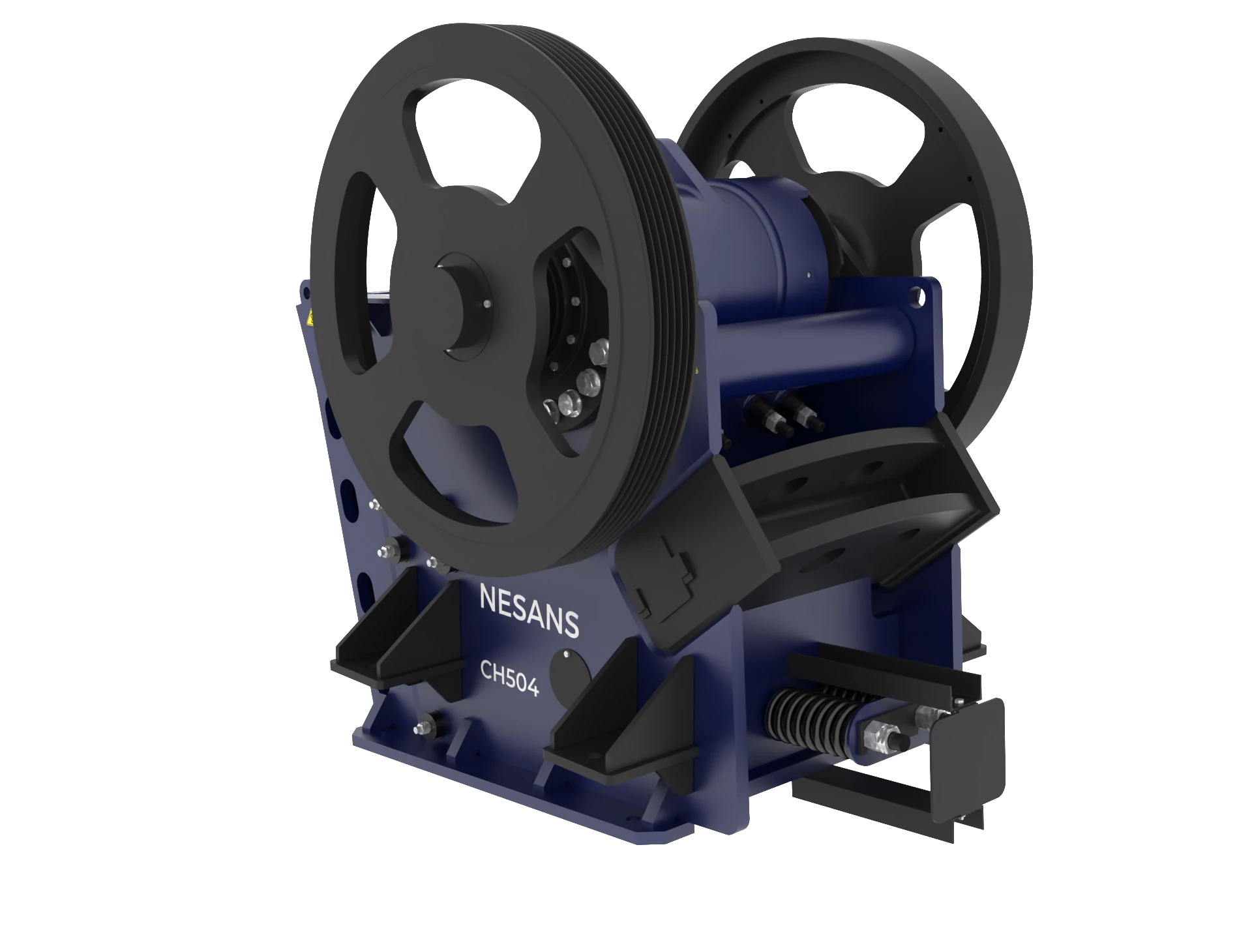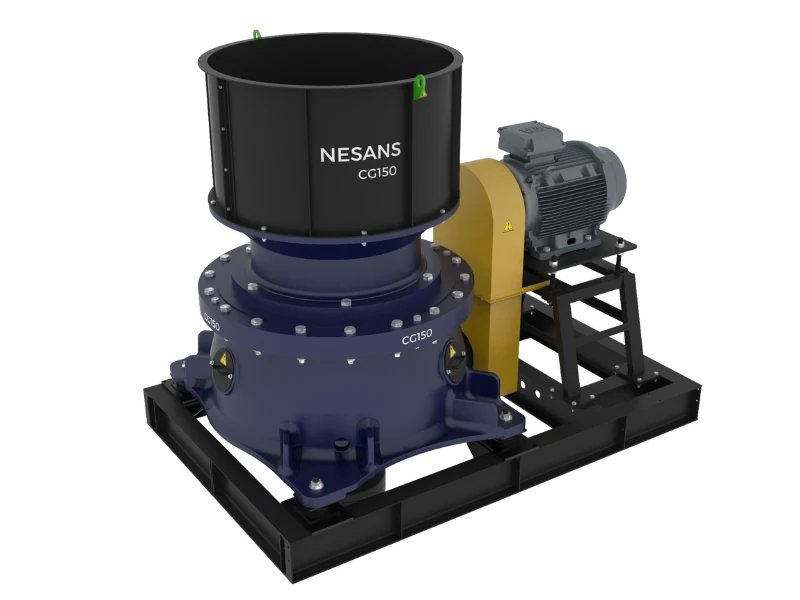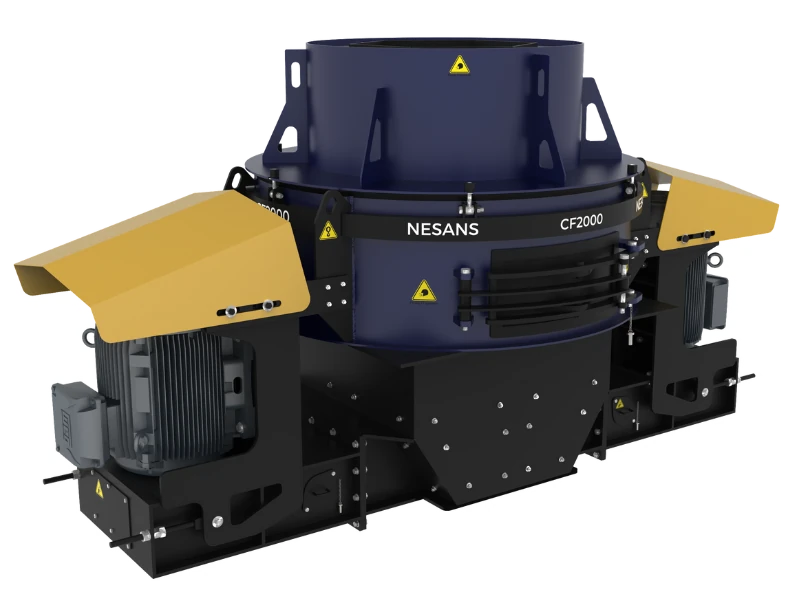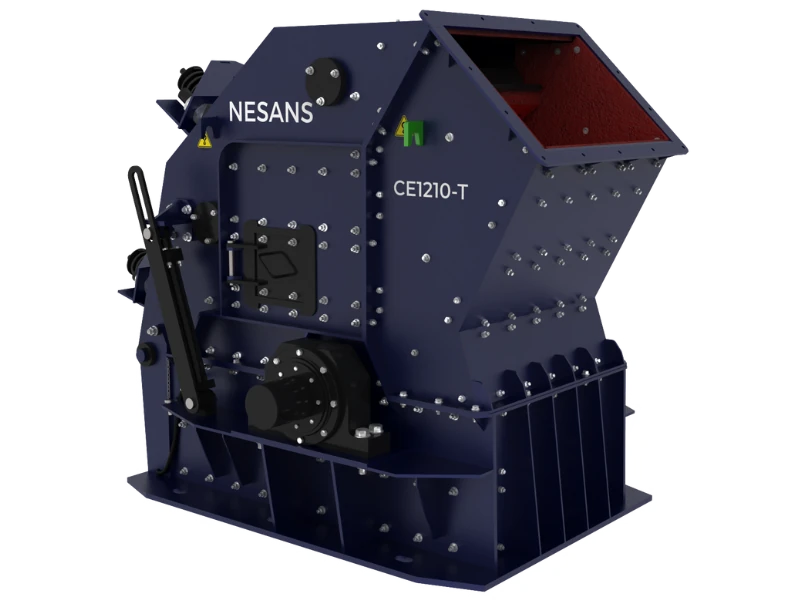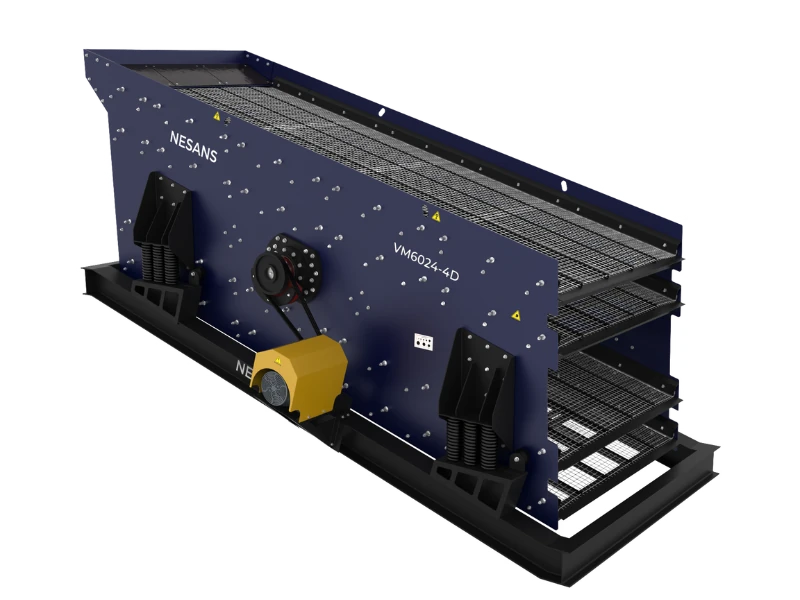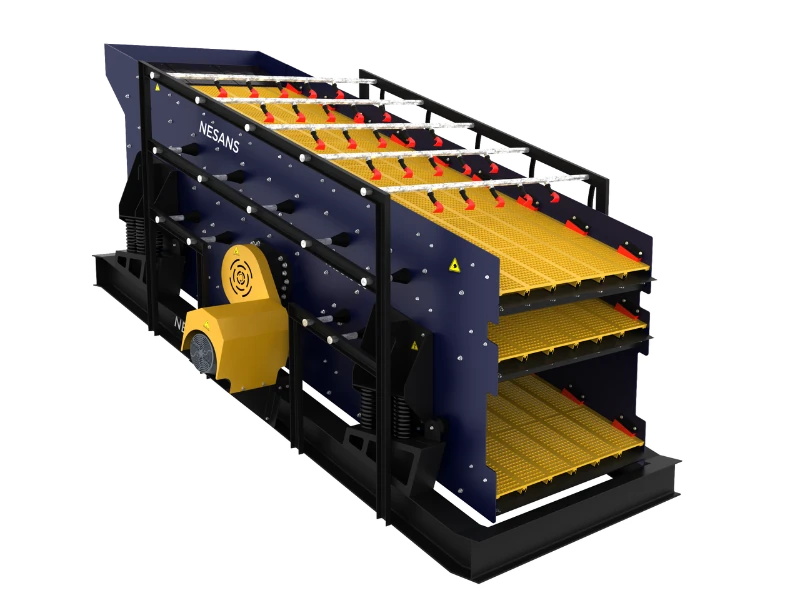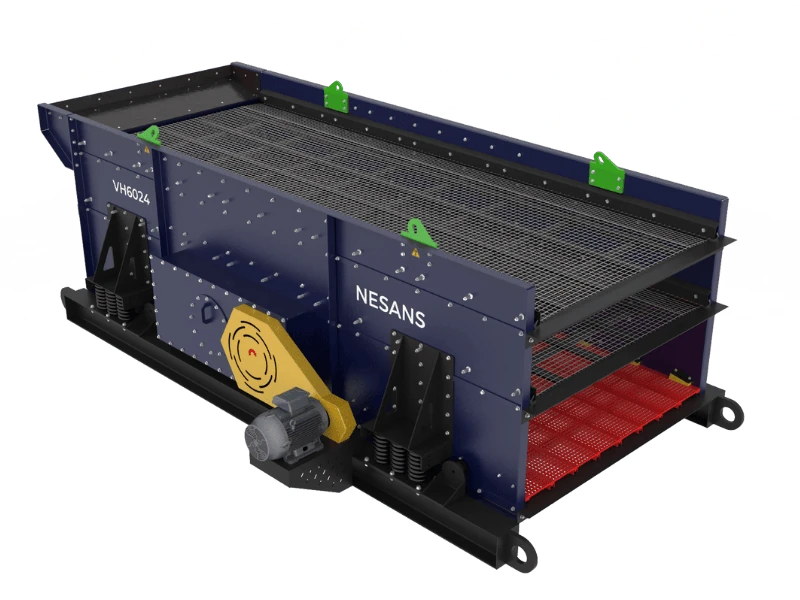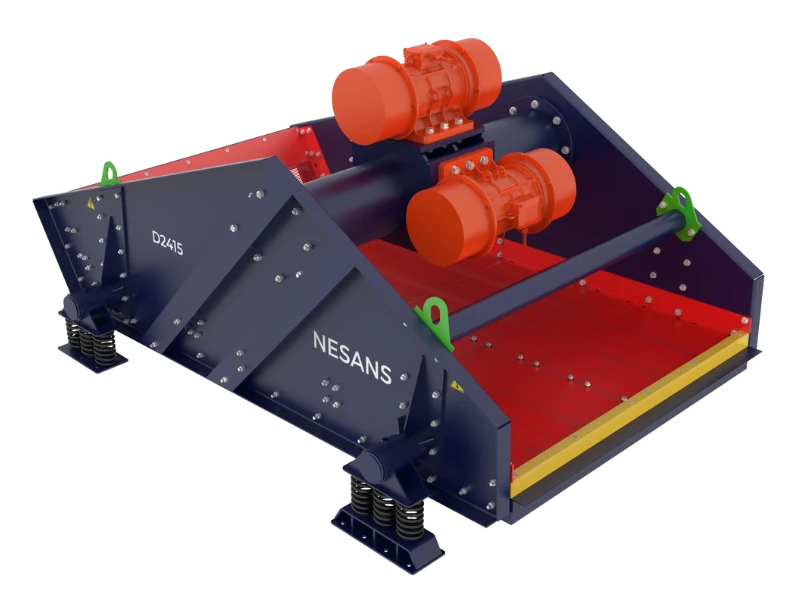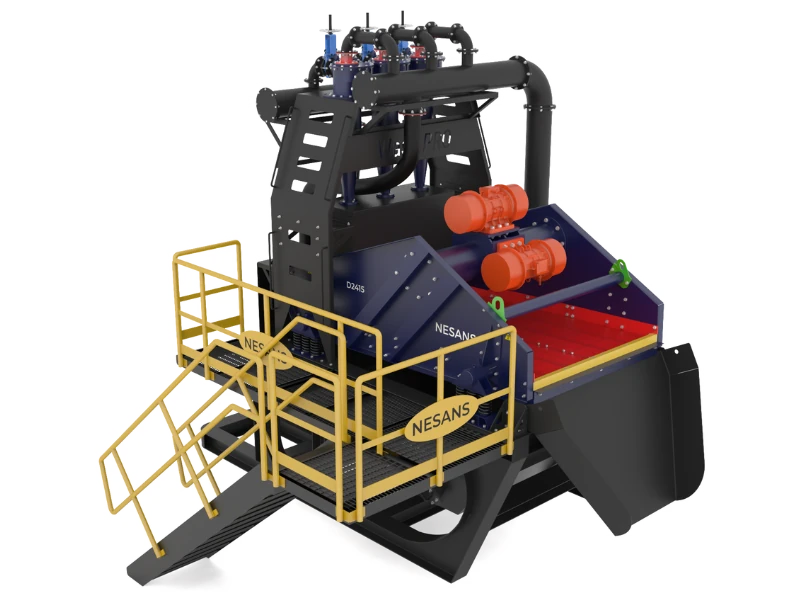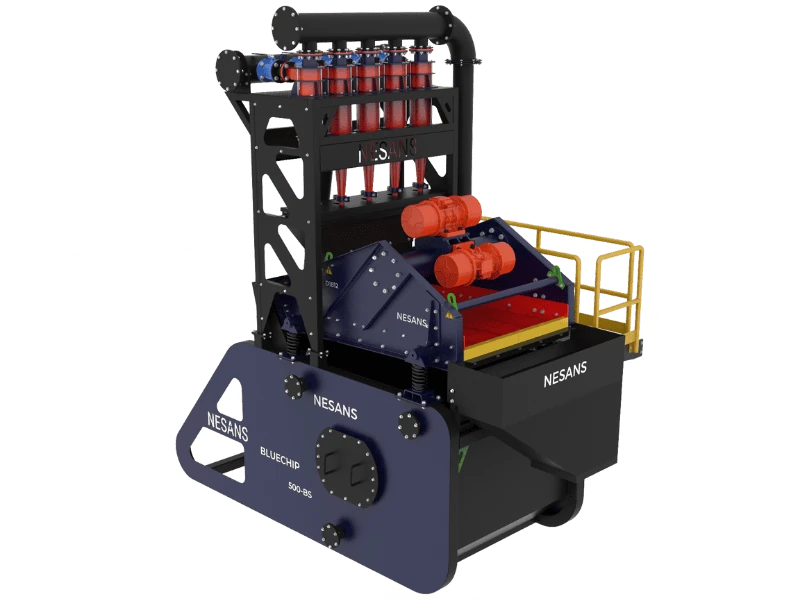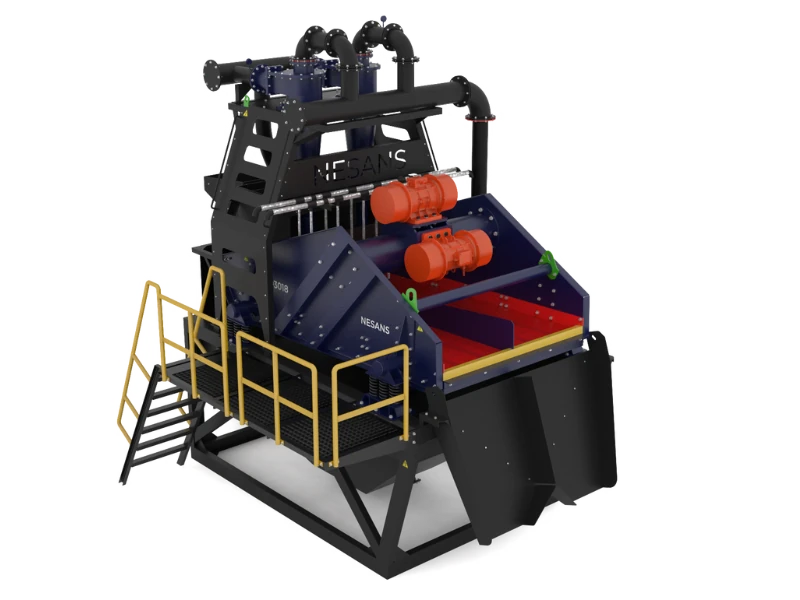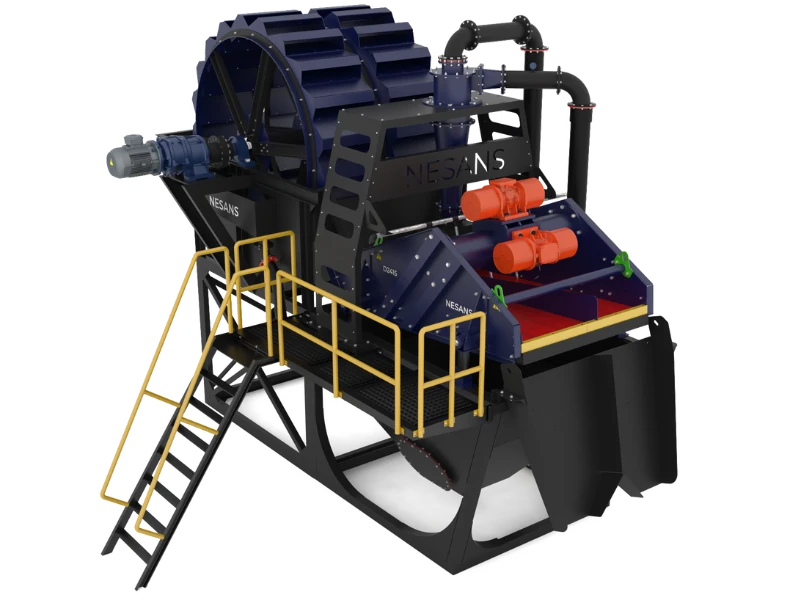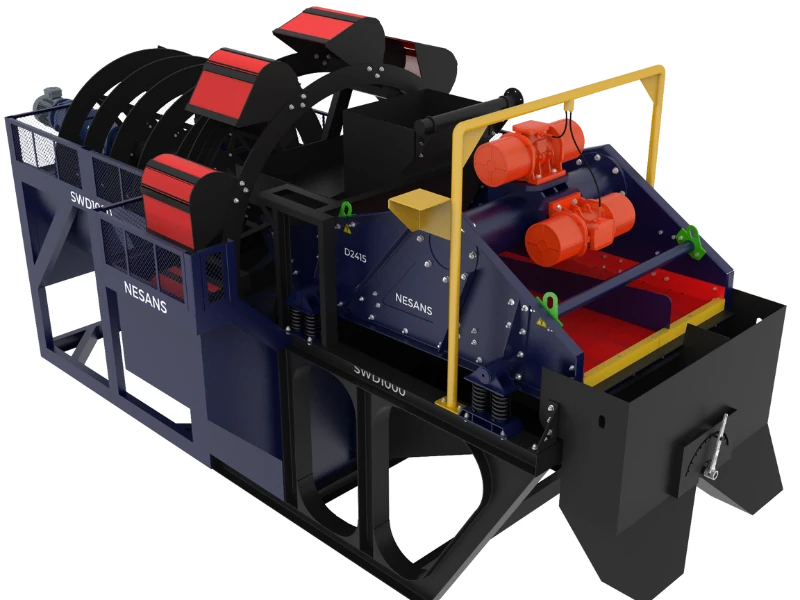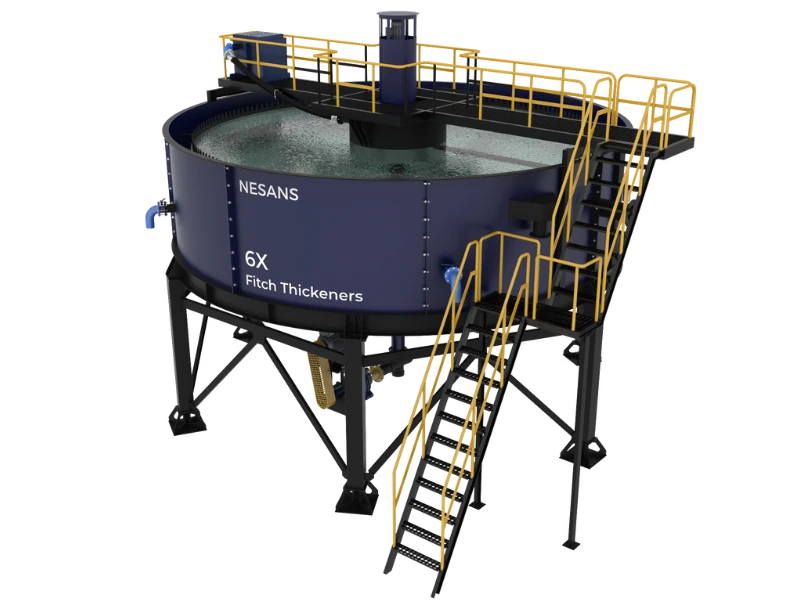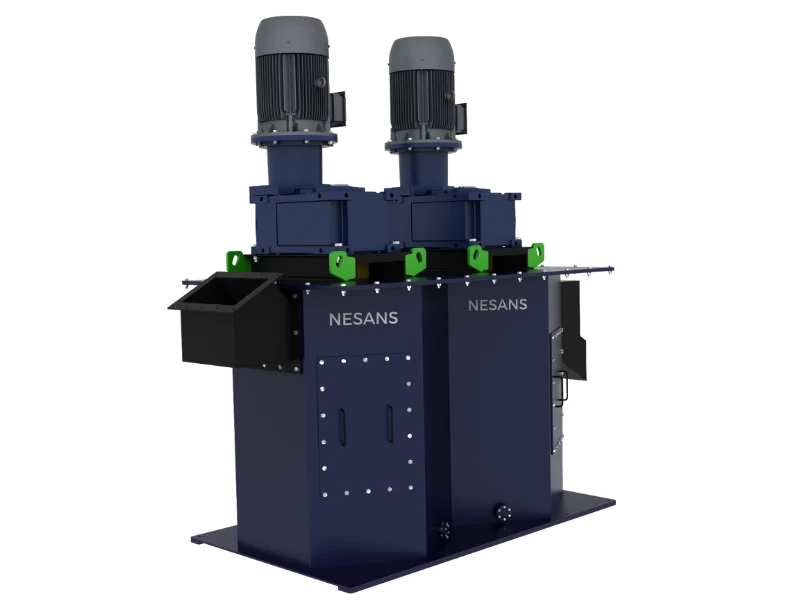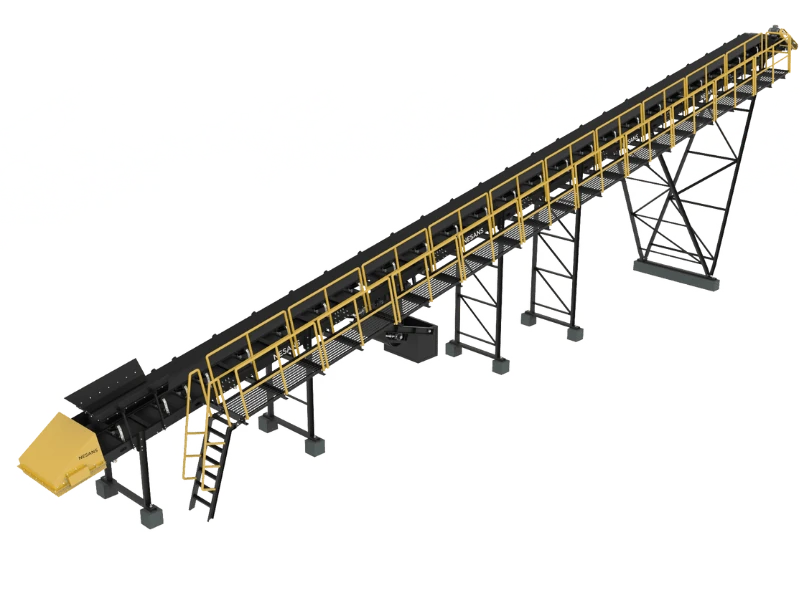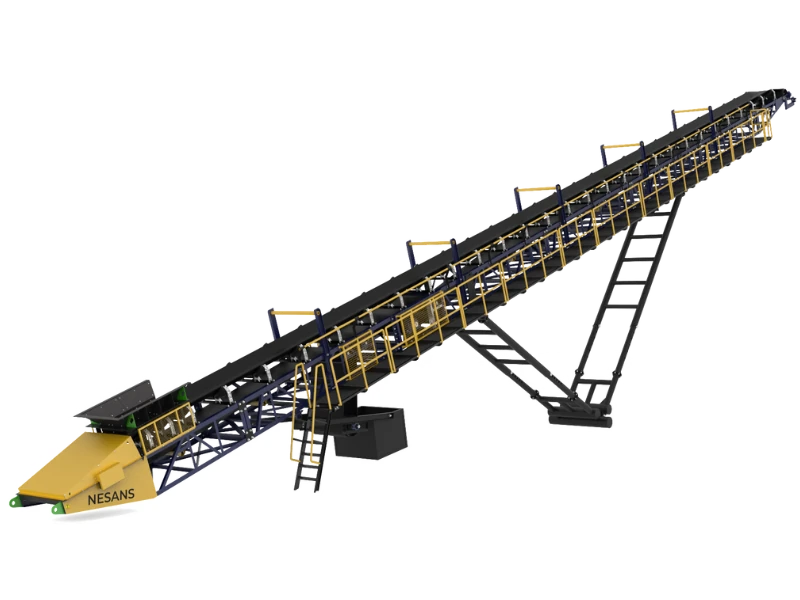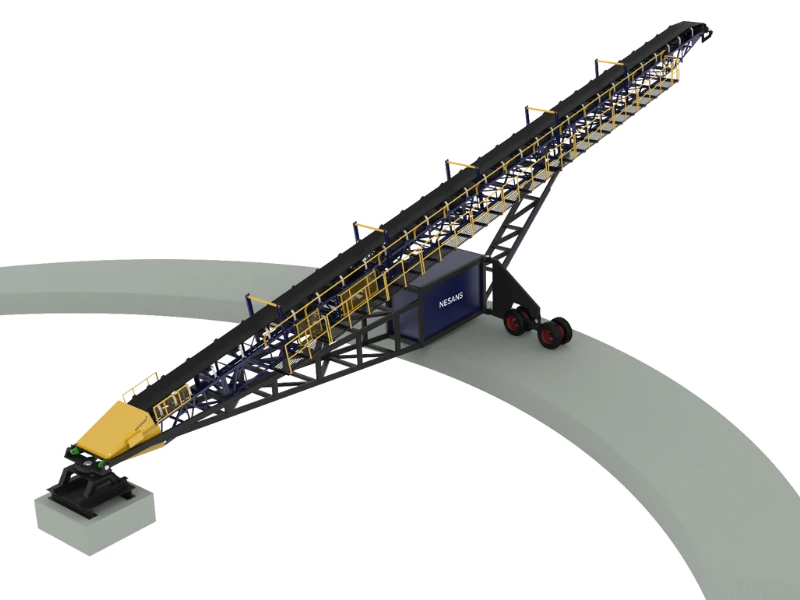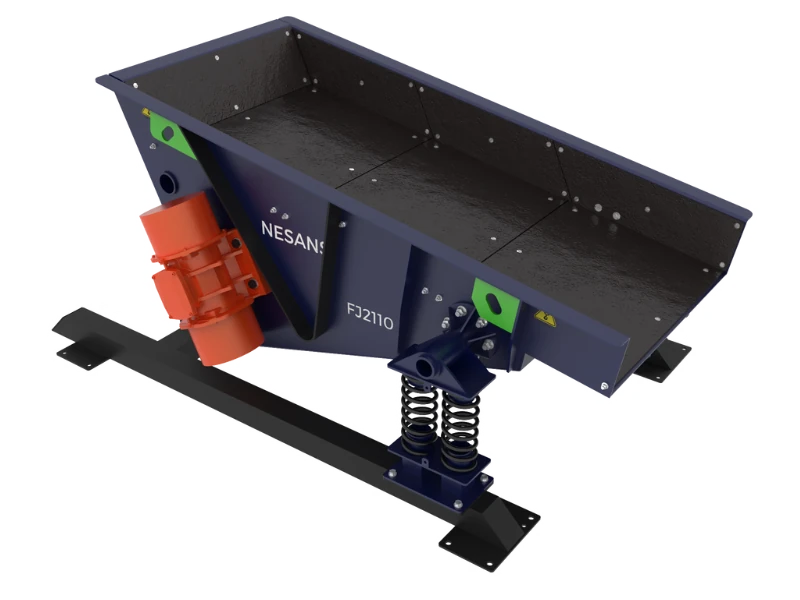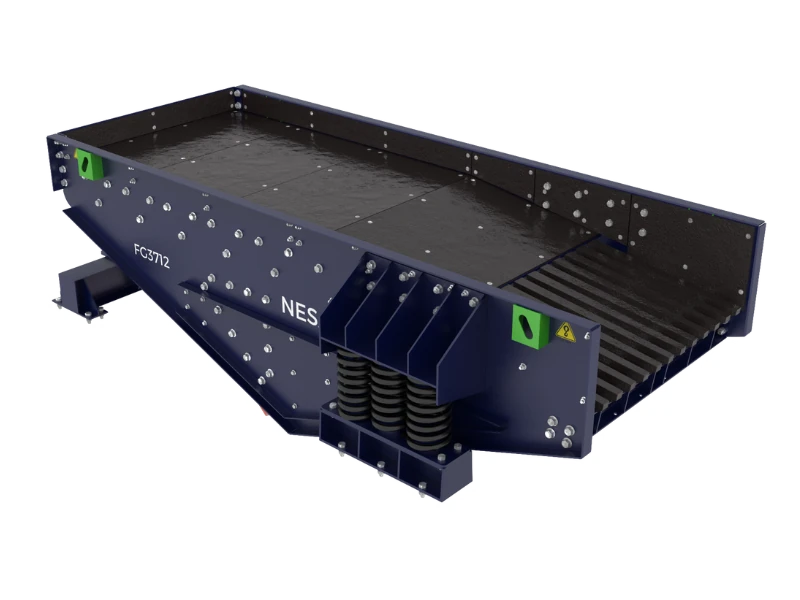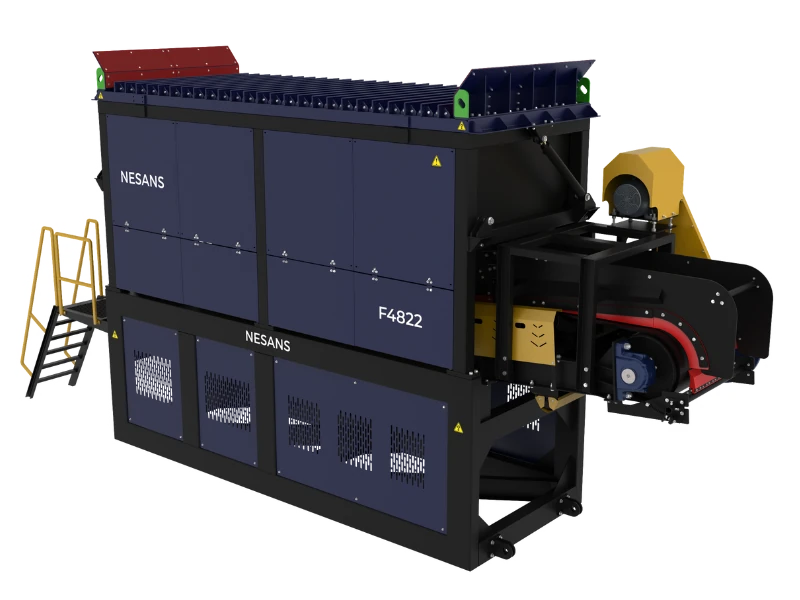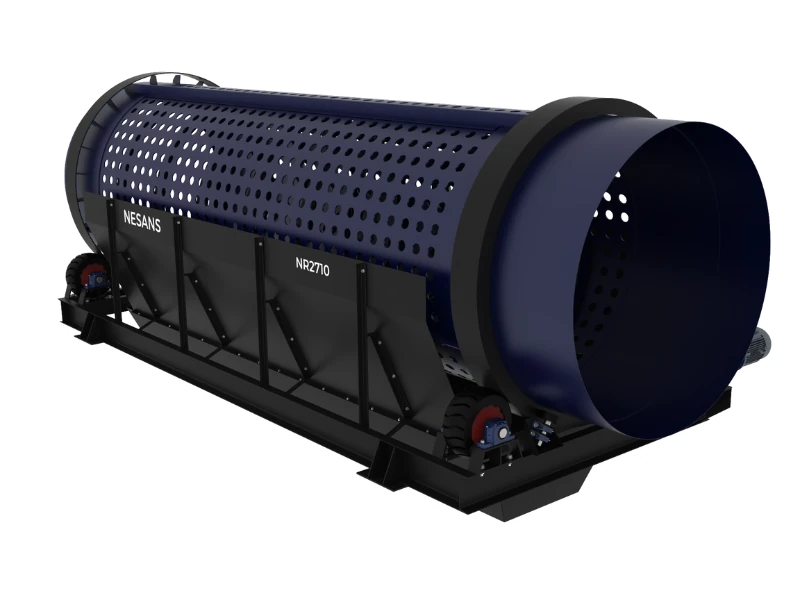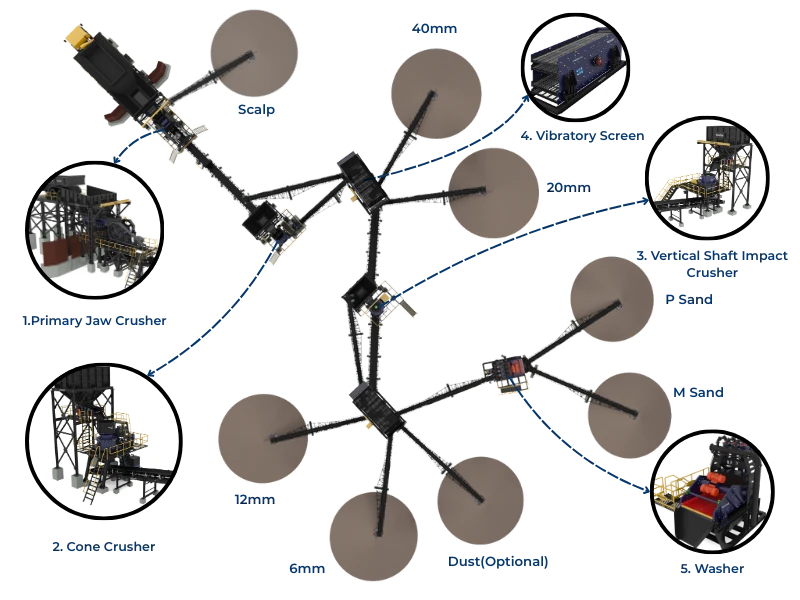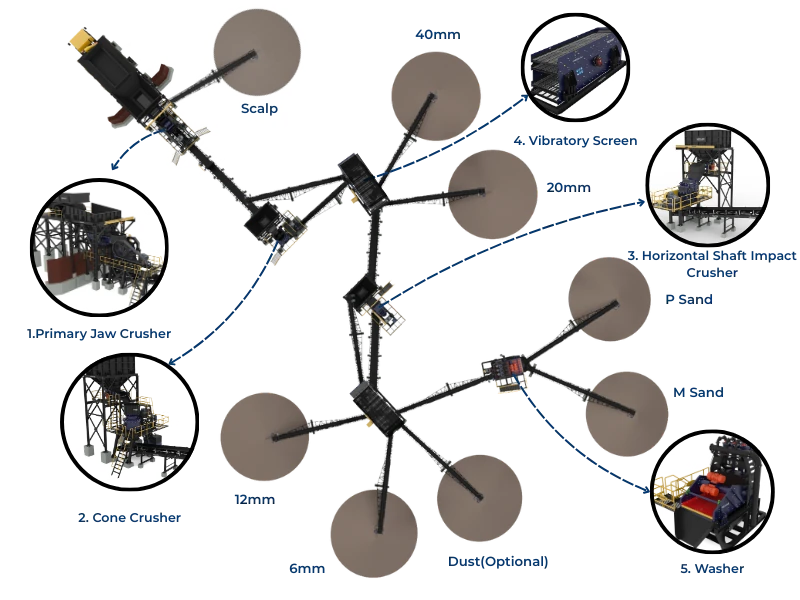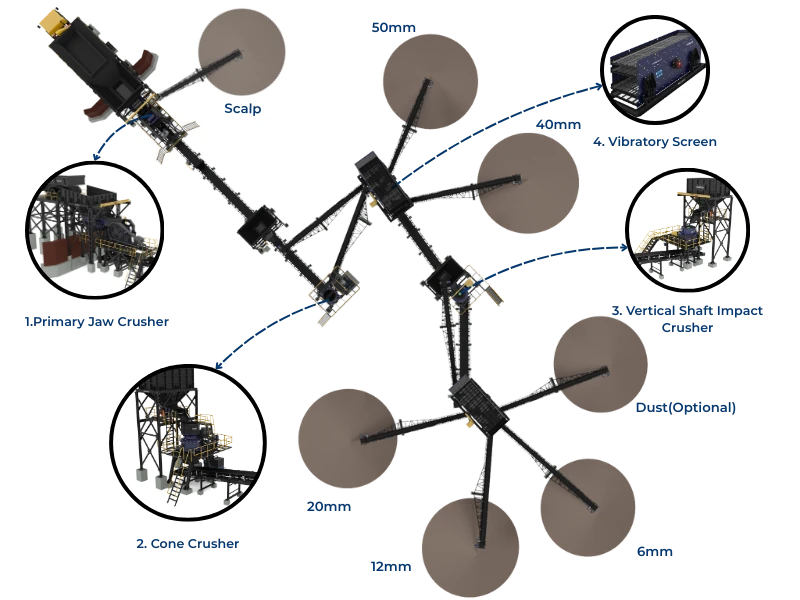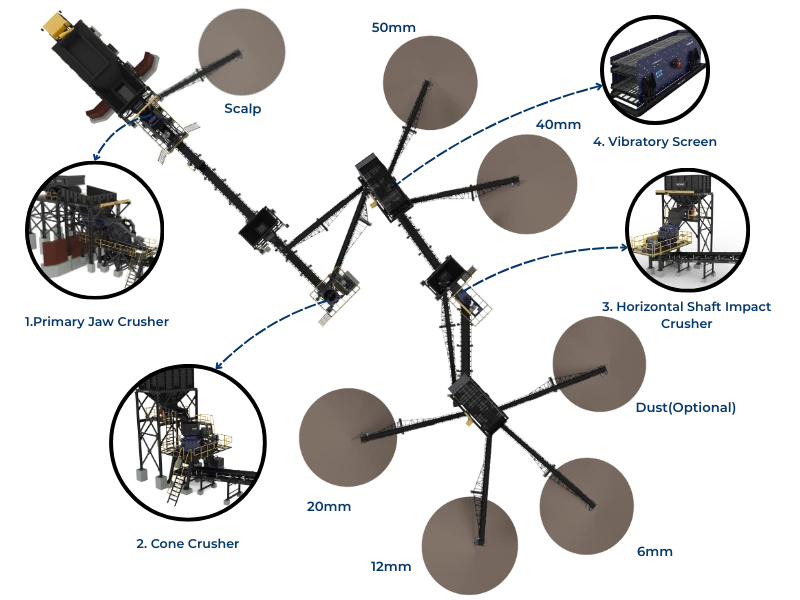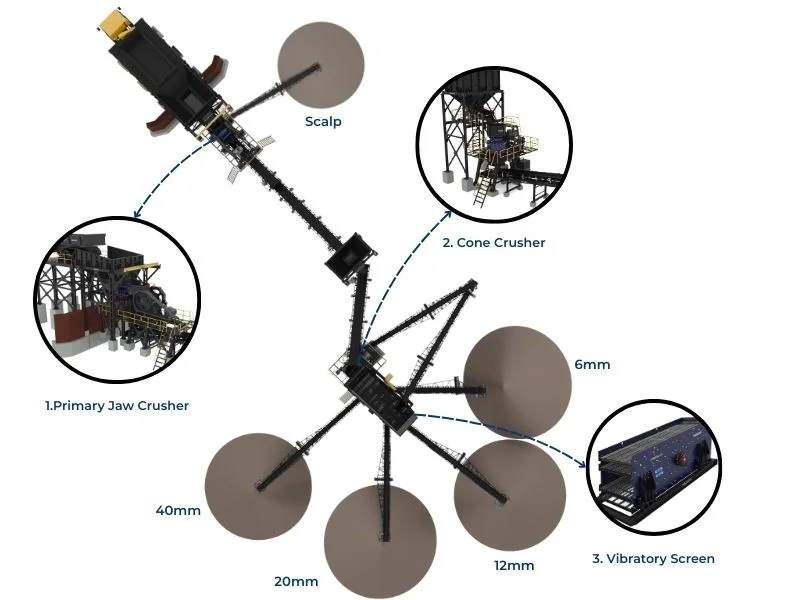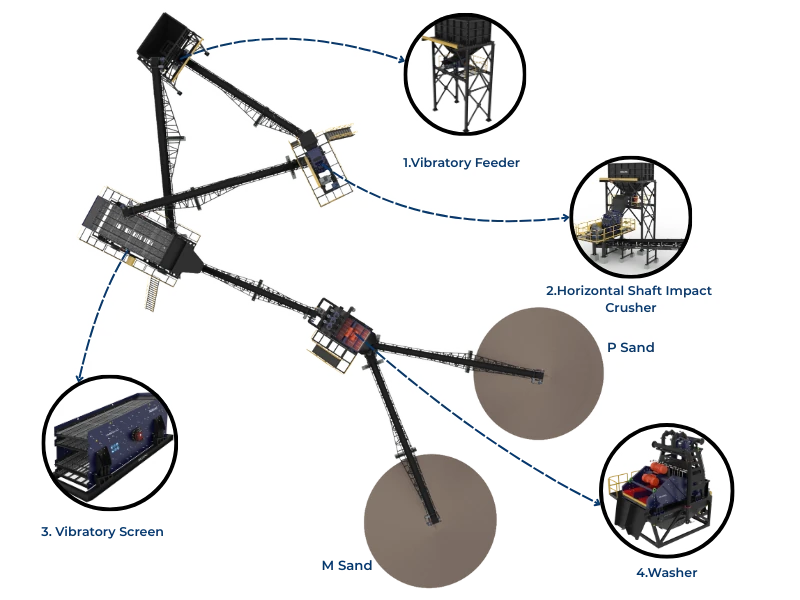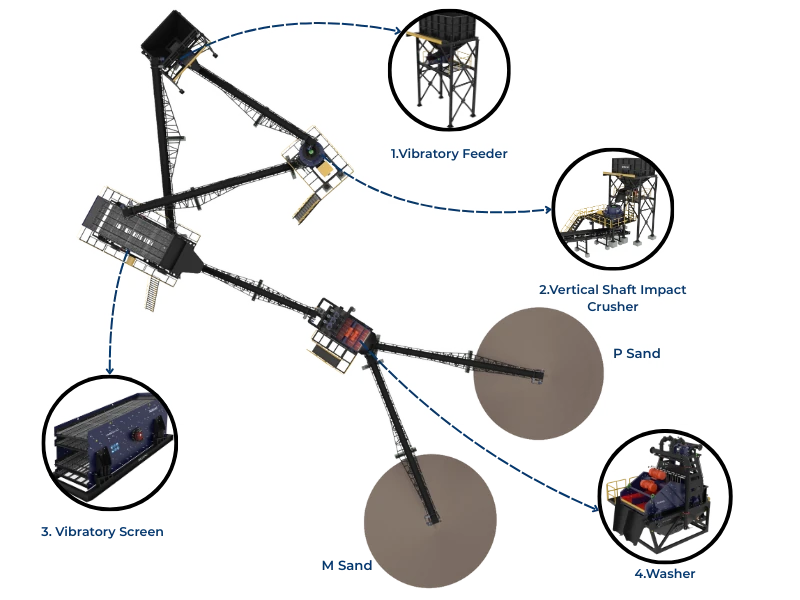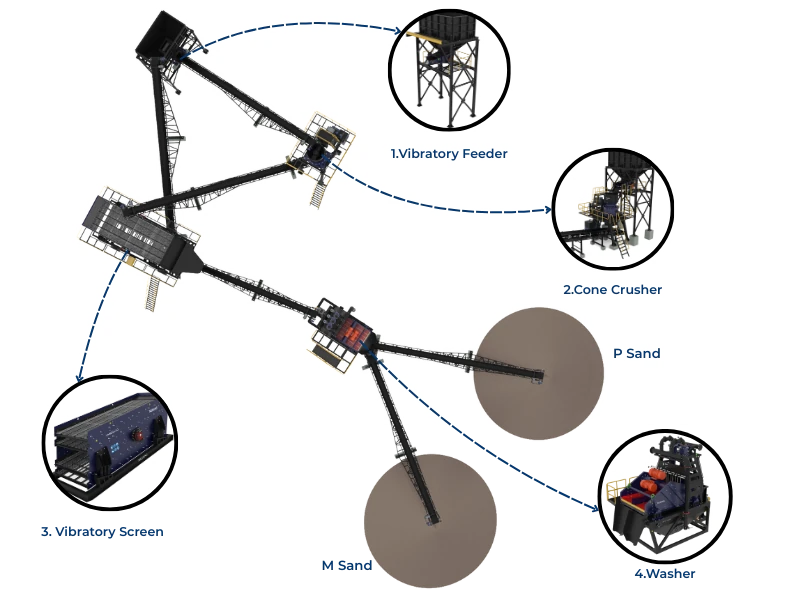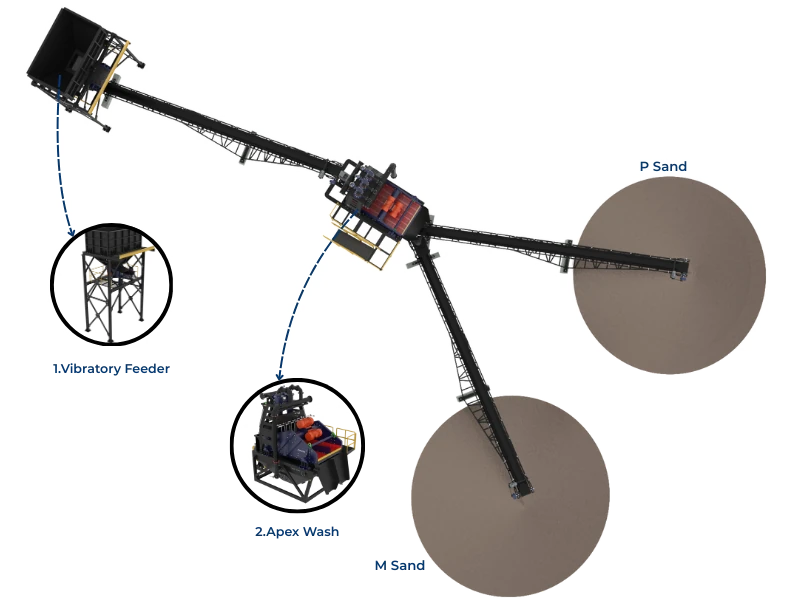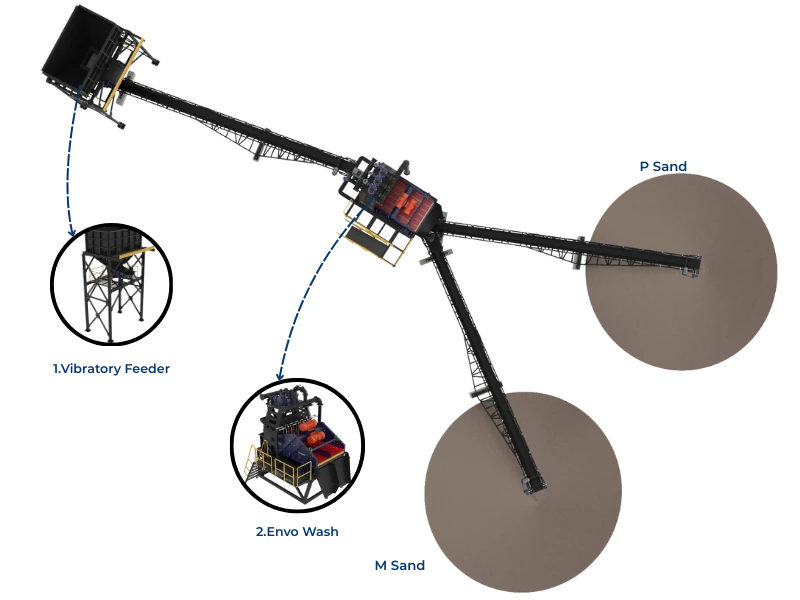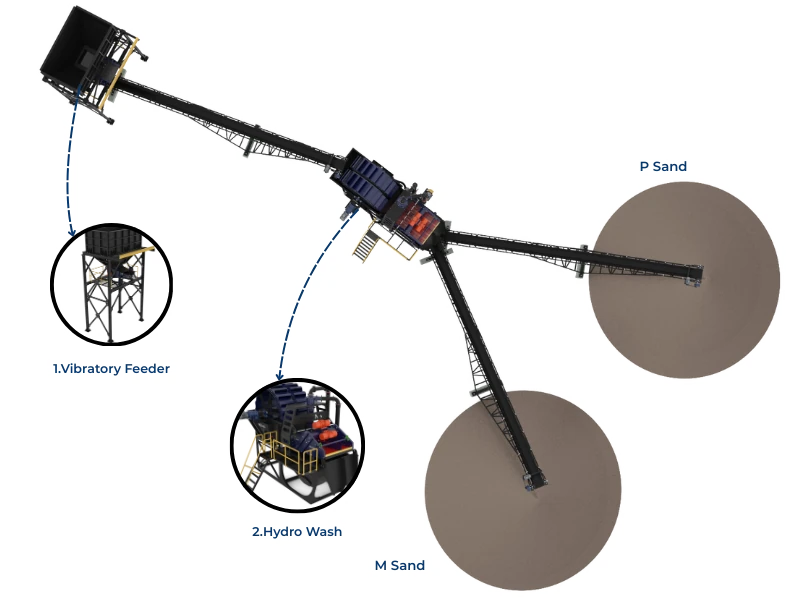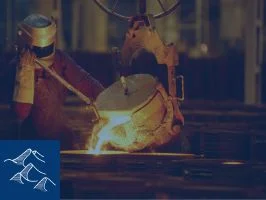Your jaw crusher nameplate says 250 TPH, yet actual output averages 175-190 TPH. The crusher runs well when it has material—but 35-40% of operating time, it's starved, waiting for the next surge from your bin. This isn't a crusher problem—it's a feeding problem. Inconsistent feed rates don't just reduce capacity; they create uneven wear, quality variations, and energy waste that costs ₹40-60 lakhs annually in a mid-size operation.
Feeders are the most underestimated component in aggregate processing—often specified as an afterthought or undersized to save initial capital. Yet they determine whether crushers achieve rated capacity, whether product grading remains consistent, and whether wear parts last their projected lifespan. A properly selected and operated feeder transforms batch processing into continuous flow, enabling crushers to operate in their optimal efficiency zone rather than cycling between starvation and overload.
This guide examines the critical relationship between feeder design and crusher performance, focusing on why feeder failures manifest as crusher problems and how proper feeding recovers 20-30% hidden capacity while extending liner life.
Understanding Choke Feeding Principles
Jaw crushers and cone crushers require "choke feeding"—maintaining a full crushing chamber with material packed above the discharge opening. This isn't excessive loading; it's the design condition for efficient crushing.
Why Choke Feeding Matters:
- Inter-particle Crushing: Material in a choke-fed chamber crushes against other particles, not just liner surfaces—reducing liner wear by 30-40%
- Consistent Product Size: Choked chambers maintain stable CSS (closed-side setting), producing uniform gradation batch to batch
- Energy Efficiency: Full chambers reduce no-load running time; specific energy (kWh/ton) decreases by 15-20% at choke feed vs. starved feed
- Maximum Throughput: Crushers achieve nameplate capacity only under choke feed conditions—starved feeding reduces capacity by 20-35%
A 250 TPH jaw crusher with 100-second retention time requires:
- Chamber volume of 250 tons/hr ÷ 36 cycles/min = 6.9 tons per crush cycle
- If feeder delivers inconsistent surges (3-10 tons per surge), crusher alternates between overload and starvation
- Time-averaged production drops to 170-180 TPH despite crusher mechanical capability
⚠️ Impact on Liner Life: Starved feeding exposes liner surfaces to direct rock-on-metal impacts instead of cushioned inter-particle crushing. This increases liner wear rates by 35-50%, reducing wear life from 8,000 hours to 5,000-5,500 hours. For a liner set costing ₹18-25 lakhs, premature replacement increases annual wear costs from ₹27 lakhs to ₹45 lakhs—an ₹18 lakh penalty for inconsistent feeding.
Feeder Types and Selection Criteria
Apron Feeders: Heavy-Duty Primary Feeding
Apron feeders use overlapping steel pans on roller chains to withdraw material from bins and transport it to crushers. They excel in handling large, abrasive material with high surge capacity.
Advantages:
- Handle 800-1200mm lump sizes without damage
- High surge capacity—can absorb dump truck loads without overload
- Positive withdrawal from bins prevents bridging and ratholing
- Variable speed control for precise feed rate adjustment
- Rugged construction—20+ year service life in harsh conditions
Disadvantages:
- Higher capital cost—2-3× cost of vibratory feeders for equivalent duty
- More maintenance points—chain tensioning, pan alignment, roller replacement
- Material spillage at pan overlaps requires edge sealing or collection
Best Applications:
Primary crushing with ROM feed >500mm, high-impact loading from trucks or excavators, 24/7 operation requiring maximum reliability.
Vibratory Grizzly Feeders: Scalping + Feeding
Vibratory grizzly feeders combine feeding with pre-scalping, removing fines before the crusher and protecting downstream equipment.
Design Features:
- Grizzly Bar Spacing: Set at 70-85% of crusher CSS to remove material that doesn't require crushing
- Vibration Parameters: 4-8mm amplitude at 850-950 RPM for coarse scalping duty
- Slope: 5-10° incline to promote material advance and fines drop-through
- Length: Minimum 3-4 meters for effective scalping—shorter units become simple conveyors
Scalping Efficiency Benefits:
For feed with 30% -CSS fines content, effective scalping:
- Reduces crusher feed tonnage by 25-30%, increasing effective capacity
- Eliminates cushioning fines that reduce crushing efficiency
- Protects crusher from packing and choking on clay or wet material
- Generates bypass fines that can blend directly into products, reducing rehandling
Nesans grizzly feeders are engineered with optimized bar spacing and vibration parameters for maximum scalping efficiency while maintaining controlled feed rates to crushers.
Belt Feeders: Precision Control
Belt feeders provide the highest precision for controlled feed rates, critical in secondary and tertiary crushing applications.
Advantages:
- Precise feed rate control via variable speed—accuracy within ±2-3%
- Smooth material flow without surges or pulsation
- Load sensing capability—integrate with crusher controls for automatic rate adjustment
- Lower power consumption than vibratory designs for equivalent tonnage
Limitations:
- Limited to <300mm lump sizes due to belt damage risk
- Requires consistent material flow from bin—sensitive to bridging or ratholing
- Belt wear in abrasive service—replacement every 12-24 months
Nesans belt feeders provide precision feed control for secondary and tertiary crushing applications, with integrated controls for crusher optimization and load balancing.
Pan Feeders: Versatile Mid-Range Solution
Pan feeders bridge the gap between apron and vibratory feeders, offering moderate surge capacity with simpler maintenance.
Characteristics:
- Handle 200-600mm lumps effectively
- Chain-driven pans with overlapping design similar to aprons but lighter duty
- Lower capital and maintenance costs than apron feeders
- Suitable for secondary crushing and scalping applications
Sizing Feeders for Crusher Performance
Feed Rate Calculation
Feeder capacity must match crusher requirements with appropriate surge allowance.
Basic Sizing Formula:
Feeder Capacity = Crusher TPH × Surge Factor × Availability Factor
Where:
- Crusher TPH: Rated capacity at CSS and design feed gradation
- Surge Factor: 1.2-1.4 for continuous bin discharge, 1.5-1.8 for truck dumping with surges
- Availability Factor: 1.1-1.15 to allow maintenance time without production loss
Example: 200 TPH Jaw Crusher Fed from Bin with Periodic Truck Dumps
Feeder Capacity = 200 TPH × 1.5 (surge) × 1.1 (availability) = 330 TPH minimum feeder capacity
Specifying a 250 TPH feeder would create bottleneck conditions 40-50% of operating time when trucks dump, causing crusher starvation during intervals.
Bin Discharge Design
Even properly sized feeders fail if bin discharge geometry causes material flow problems.
Critical Bin Design Parameters:
- Discharge Opening: Minimum 3-5× maximum lump size to prevent bridging
- Hopper Angle: 60-70° from horizontal for free-flowing aggregate, 55-60° for wet or cohesive material
- Live Capacity: Maintain material level above feeder at all times—avoid "rathole" flow where center empties and sides remain stagnant
- Vibrators: Install bin vibrators (2-4 units) to prevent bridging in critical applications
Mass Flow vs. Funnel Flow:
Bins should be designed for "mass flow"—all material moves when withdrawal occurs. "Funnel flow" (center drains, sides stagnant) creates:
- Segregation—fines concentrate in center, coarse material around edges
- Inconsistent feed gradation to crusher—variability in product sizing
- Stale material retention—portions of bin inventory never discharge
⚠️ Impact on Crusher Consistency: Funnel-flow bins feeding crushers create 20-30% variation in feed gradation hour-to-hour. This translates to product size variation (standard deviation 12-18mm vs. 5-8mm with consistent feed), causing customer complaints and requiring expensive reprocessing or discounting. A 200 TPH plant selling 40mm aggregate at ₹800/ton but having to discount 15% of production to ₹650/ton due to sizing inconsistency loses ₹6-9 lakhs monthly in premium value.
Feeder Operation and Control Integration
Variable Speed Control
Modern feeders should include VFD (variable frequency drive) control for precise tonnage adjustment:
Manual Control Mode:
- Operator adjusts feeder speed based on crusher load and product requirements
- Typical range: 20-100% of maximum speed for 4:1 turndown ratio
- Set speed to maintain 80-90% crusher power draw for optimal choke feeding
Automatic Control Mode (Advanced Systems):
- Crusher Power Feedback: Feeder speed increases/decreases based on crusher motor load—maintains constant 85-90% power draw
- Level Control: Monitors bin level and adjusts feed rate to prevent overload or starvation
- Interlock Protection: Stops feeder automatically if crusher trips, preventing pile-up
Surge Protection Strategies
Truck dumping creates 15-40 ton surges in 30-60 seconds—far exceeding crusher instantaneous capacity.
Surge Management Options:
- Oversized Bin Volume: Provide 30-60 minutes live storage (50-200 tons) to absorb dump surges and smooth feed rate
- Dump Control Discipline: Limit trucks to one dump every 5-8 minutes, allowing feeder time to clear material
- Pre-Screening: Install vibratory grizzly to scalp 20-30% of material before crusher, effectively increasing crusher capacity
- Feeder Oversizing: Specify feeder at 1.5-1.8× crusher capacity to handle peak surge rates
Maintenance and Optimization
Apron Feeder Maintenance
Weekly:
- Inspect chain tension—adjust to maintain 25-50mm sag at mid-span
- Check pan bolt tightness—vibration loosens fasteners over time
- Lubricate chain drive and roller bearings per manufacturer schedule
Monthly:
- Measure pan wear at high-impact zones—replace when wear depth reaches 50% of original thickness
- Inspect chain wear—replace when link pitch increases 3% (elongation)
- Verify drive alignment and sprocket condition
Quarterly:
- Full structural inspection—check for frame cracks, loose bolts, skirt wear
- Roller bearing inspection—replace any showing roughness or noise
- Chain and pan replacement planning based on wear measurements
Vibratory Feeder Maintenance
Daily:
- Visual inspection for unusual vibration or noise
- Check for grizzly bar damage or excessive wear
- Verify material flow—watch for bridging or uneven distribution
Weekly:
- Measure vibration amplitude at 3-4 points—compare to baseline (should be within ±10%)
- Inspect spring mounts for cracks or looseness
- Check motor mounting and electrical connections
Monthly:
- Grizzly bar replacement—rotate or replace bars worn >40% of original height
- Spring inspection and replacement if showing fatigue cracks
- Motor bearing lubrication and thermal check
Belt Feeder Maintenance
Daily:
- Belt tracking verification—adjust if belt runs >50mm off-center
- Check belt surface for cuts or gouges—repair small damage immediately
- Inspect belt cleaner effectiveness
Weekly:
- Idler inspection—spin each roller checking for resistance or noise
- Belt tension check—verify proper tension per manufacturer specs
- Clean under-belt area to prevent buildup on return rollers
Quarterly:
- Belt cover thickness measurement at 5-10 points—track wear patterns
- Pulley lagging condition check—replace if 30% worn
- Drive system inspection—gearbox oil level, coupling condition, motor alignment
Troubleshooting Common Feeder Problems
Problem: Crusher Starving Despite Adequate Bin Level
Symptoms: Crusher runs at 40-60% capacity, frequent starvation, yet bin shows material above feeder.
Root Causes & Solutions:
- Ratholing in Bin: Center empties while sides remain full - Solution: Install bin vibrators, modify hopper angle to 60-65°, reduce bin opening if oversized
- Bridging Over Feeder: Material arches across discharge opening - Solution: Increase discharge opening to 5× max lump size, add bin vibrators, verify material not wet or sticky
- Feeder Undersized: Cannot extract material fast enough from bin - Solution: Increase feeder speed if within capacity, or upgrade to larger feeder
- Worn Feeder Components: Reduced extraction efficiency due to pan or grizzly bar wear - Solution: Replace worn components—don't run past 50% wear
Problem: Inconsistent Feed Rate (Surging)
Symptoms: Crusher alternates between overload and starvation every 2-5 minutes.
Root Causes & Solutions:
- Insufficient Bin Volume: Cannot buffer surges from truck dumping - Solution: Increase bin size or implement controlled dumping schedule
- Variable Speed Control Missing: Feeder runs constant speed regardless of demand - Solution: Add VFD control, train operators to adjust feed rate based on crusher load
- Material Segregation: Feed composition varies as bin empties (fines drain first, coarse follows) - Solution: Redesign bin for mass flow, install bin level indicators, manage inventory to prevent complete emptying
- Feeder Vibration Issues: Inconsistent amplitude or frequency causing erratic feed - Solution: Inspect springs, motor mounts, counterweights—restore vibration to design parameters
Problem: Excessive Feeder Wear
Symptoms: Apron pans or grizzly bars wearing out in 3-6 months instead of projected 12-18 months.
Root Causes & Solutions:
- Excessive Drop Height: Material free-falling onto feeder from too-high discharge - Solution: Reduce drop height to <1.5 meters, install impact plates at loading zone
- Abrasive Material: High quartz content accelerates wear - Solution: Upgrade to AR400/500 wear plate on pans, use replaceable wear bars on grizzly
- Oversized Material: Lumps exceeding design limits cause impact damage - Solution: Install scalping screen before feeder, or upgrade feeder for larger lumps
- Poor Lubrication: Chain or bearing wear accelerating due to inadequate lubrication - Solution: Implement scheduled lubrication program, verify correct lubricant type and quantity
ROI of Proper Feeder Selection and Operation
Upgrading from inadequate to proper feeding delivers measurable capacity and cost benefits:
Capacity Recovery:
- Eliminate crusher starvation: Increase actual throughput from 70% to 92% of nameplate (175→230 TPH for 250 TPH crusher)
- Value of additional 55 TPH × 20 hr/day × 300 days/year = 330,000 tons/year
- At ₹50/ton contribution margin: ₹1.65 crores/year revenue increase
Liner Life Extension:
- Choke feeding reduces wear rates by 35-40%
- Liner set lasting 8,000 hours vs. 5,000 hours at ₹22 lakhs/set
- Annual savings: ₹22 lakhs × (1/5000 - 1/8000) hours × 6,000 operating hours/year = ₹16.5 lakhs/year
Energy Efficiency:
- Choke-fed crusher: 1.8 kWh/ton vs. starved crusher: 2.3 kWh/ton
- Savings: 0.5 kWh/ton × 200 TPH × 6,000 hrs = 600,000 kWh/year
- At ₹8/kWh: ₹48 lakhs/year energy savings
Product Quality Improvement:
- Consistent feed → consistent product → reduced reprocessing and discounting
- Estimated value: ₹15-25 lakhs/year
Total Annual Benefit: ₹2.25-2.5 crores/year
Investment Required:
- Upgrade to properly sized feeder with VFD control: ₹35-55 lakhs
- Bin modifications for mass flow: ₹10-15 lakhs
- Total investment: ₹45-70 lakhs
Payback period: 2-4 months
Conclusion: Feeders as the Key to Crusher Optimization
Crushers don't fail to reach capacity on their own—they're starved by inadequate feeding. The path from 70% utilization to 90%+ utilization isn't buying a bigger crusher; it's providing consistent, controlled material flow at rates that maintain choke feeding conditions. This requires proper feeder selection (capacity 1.3-1.5× crusher rating), attention to bin discharge design, and operational discipline around surge management.
Leading aggregate producers understand that crushers are production assets that must operate at design capacity to justify their capital cost. Every hour a 250 TPH crusher runs at 175 TPH is wasting ₹6,000-10,000 in unrealized production value—multiplied by 6,000 operating hours, that's ₹3.6-6 crores annually in lost opportunity. Fix the feeder, and the crusher suddenly delivers its rated performance.
Remember: Your crusher is only as good as your feeder. Invest 15-20% of crusher capital cost in a properly engineered feeding system, and you'll recover 100% of crusher rated capacity—capacity you've already paid for but aren't using.
Is Your Crusher Starving? Recover 20-30% Hidden Capacity with Proper Feeding
Nesans provides complete feeding solutions engineered for crusher optimization—from heavy-duty grizzly feeders for primary applications to precision belt feeders for secondary and tertiary crushing. Our integrated control systems ensure consistent choke feeding for maximum crusher efficiency.
Contact our crushing specialists for a free feeder assessment and capacity optimization analysis.

